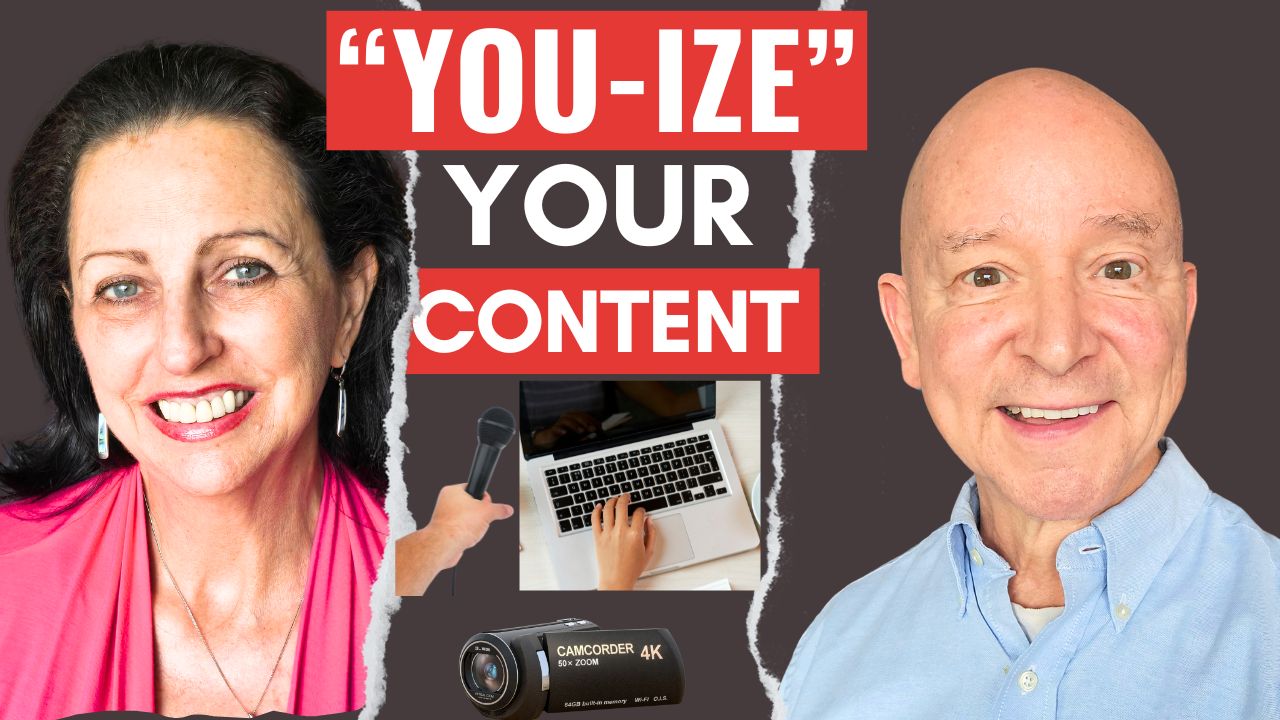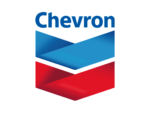Are you concerned that your content is getting lost in a sea of AI generated dribble? Do you wanna create content that will make your post, your videos, your content really uniquely memorable, well, then you’re in the right place.
Welcome to another exciting episode of “Stark Raving Entrepreneurs”!
I’m your host, Terry Brock, joined by my co-host and fiancé, Gina Carr.
Today, we’re diving into a crucial topic for content creators: how to make your content uniquely memorable in a world flooded with AI-generated material.
We’ll introduce you to the concept of “You-ize,” which means infusing your personal stories, tone, and style into your content to make it stand out.
From clarifying your target audience and solving their problems to leveraging AI tools for optimization and repurposing content across different platforms, we’ve got you covered.
Plus, we’ll share practical tips and tools, including Castmagic and Hemingway, to streamline your content creation process.
Join us as we guide you step-by-step to turn your content into something truly special—something that’s unmistakably you!
Stick around till the end for a special gift and some invaluable resources to help you stand out and succeed.
First, here’s a gift for you to better understand AI and build sales –
Recommended AI tools for business growth.
http://AItools4biz.com
Here’s Your Video Link:
Listen to this & other episodes on our podcast
https://bit.ly/sre_podcast
__________________________________________________
Here are some timestamps that can be useful for you:
- **Introduction to You-Ize Concept** – [00:00:00]
– Terry introduces the concept of “You-Ize,” focusing on making content uniquely memorable by adding personal anecdotes and insights.
- **Step 1: Clarity** – [00:01:27]
– Gina talks about the first step: understanding who you serve and what problem you solve, emphasizing the importance of clarity in messaging.
- **Step 2: Personal Stories and Anecdotes** – [00:03:47]
– Gina introduces the “Memory Lane Exercise” to help create personalized content through personal stories and anecdotes.
- **Generating a Draft** – [00:07:22]
– Terry discusses creating a “doggy draft” by capturing ideas through pen and paper or voice typing, followed by refining with AI tools like ChatGPT and Perplexity.
- **Step 4: SEO and AIO** – [00:10:28]
– Gina explains the importance of search engine optimization (SEO) and artificial intelligence optimization (AIO) for making content findable and relevant.
- **Step 5: Repurposing Content** – [00:13:05]
– Terry discusses the importance of repurposing content across various platforms using tools like Cast Magic and Opus Clip.
- **Feedback and Refinement** – [00:16:19]
– The hosts talk about the importance of feedback and analytics to refine content, with mentions of tools like Kartra and YouTube analytics.
__________________________________________________
Here’s a summary in Spanish for our Spanish-speaking friends:
**Podcast:** Stark Raving Entrepreneurs
**Episodio:** You-Ize Content-Terry y Gina
En este episodio, Terry Brock y Gina Carr, anfitriones del podcast y socios, discuten estrategias para crear contenido memorable y único en una era dominada por la inteligencia artificial. Terry introduce el concepto de “U-Ize”, que implica personalizar el contenido con historias y anécdotas personales, y lo dividen en siete pasos.
1. **Claridad en el Mensaje:** Identificar a quién sirves y qué problema resuelves.
2. **Historias Personales:** Integrar historias y anécdotas propias en el contenido.
3. **Borrador Inicial:** Crear un borrador inicial y luego usar herramientas como ChatGPT para pulirlo.
4. **Optimización SEO y AIO:** Asegurarse de que el contenido sea fácilmente encontrable mediante la optimización de motores de búsqueda y la optimización de inteligencia artificial.
5. **Repurposing:** Reutilizar el contenido en diferentes formatos y plataformas usando herramientas como CastMagic y Opus Clip.
6. **Feedback:** Obtener y analizar retroalimentación para mejorar continuamente.
7. **Iteración:** Refinar y mejorar constantemente el contenido basado en la retroalimentación recibida.
Además, mencionan varias herramientas útiles como Hemingway para simplificar los textos y Kartra para la analítica de marketing. Enfatizan la importancia de hacer el contenido personal y único para destacar en un mercado saturado.
__________________________________________________
Here’s an English language transcription for your convenience:
Terry Brock [00:00:00]:
Are you concerned that your content is getting lost in a sea of AI generated dribble? Do you wanna create content that will make your post, your videos, your content really uniquely memorable, well, then you’re in the right place. Because we’re gonna show you step by step what you can do immediately to generate the results you want to build your business. Hi. I’m Terry Brock, and I’m here with Gina Carr, my fiance and my partner here at Star Craving Entrepreneurs, and we’re excited to be with you to talk about what’s going on here today, particularly as we talk about you eyes and what that means. Judah, what are your thoughts on that you eyes thing and what it is?
Gina Carr [00:00:39]:
Well, it’s a concept that you came up with, a little while back as we’re working with people. We’re coaching them on how to create content that converts to cash and to use AI to do that. And as we’re seeing in with so many people and so much of the content that’s coming out in the world right now, it’s just so same. And so it’s the it’s boring. It’s soulless. And you are you came up with the concept of teaching people to UIs by putting themselves into it, their stories, their anecdotes, their insights into the content. And so I’m excited. This is the first time publicly that we’re sharing this process, and we’ve broken it down into 7 steps that are gonna be easy for people to follow in doing this.
Terry Brock [00:01:24]:
Sounds good. Well, Gina, what’s the first step in that?
Gina Carr [00:01:27]:
Well, the first step is to get clear on what you’re talking about, what you wanna talk about. And, the best way to do that is to determine to the answers to 2 questions. Number 1 is who you serve, and number 2 is what problem do you solve? Now you can use AI to help you clarify that, but, really, this is something that’s in your heart. It’s in your heart, in your mind. Who are the people that you’re really wanting to serve, and what is that problem that only you can solve that makes you unique in all the world because of your experience, your expertise, your desire, your passions. This is what you need to be focused on. When you focus on this, when you focus on helping people, you are going to just skyrocket your ability to have impact, and that impact is gonna convert into income. So you’re gonna take your video, your audio, your text, and your images, and you’re going to UIs them by having this clarity in your messaging.
Terry Brock [00:02:29]:
Yeah. Exactly. Well, Gina, thanks for mentioning that because I came up with that idea of the to you, Isaac. Often, I would say, well, for it’s a you, Gina, should Gina eyes it? If someone’s Bob, Bob should Bob eyes it? Mary should Mary eyes it? I’m Terry, so I Terry ize it. Oh, I like to do that. It’s a part of part of who I am. But I think that’s important, but I think that’s a part of it. But also you gotta determine your tone, because you can solve the problem of what people have, and a lot of people can.
Terry Brock [00:02:55]:
Your competitors are out there, and they can get the same material. What they can’t get is your tone, how you’re coming across, and the way that you’re maybe funny, maybe not funny, maybe you bring in a certain style. Think about your unique style, and this is where your friends and your colleagues, your customers, your clients can help you to let them know let them tell you what is it that they like about you that makes you stand out. For me, I, just am usually casual, but sometimes you gotta be real formal. Okay. I can shift into that and try at least my attempt at humor. Gina, you tolerate when I’m trying to the attempt at humor even though it’s not always that way. But it’s something that makes it stand out.
Terry Brock [00:03:33]:
So I think the bottom line is when you’re part of the you guys, the first step is that clarity. Make sure that it’s something that is unique to you, something that you know, your stories, and things like that. And, Gina, what’s our next step on that?
Gina Carr [00:03:47]:
Step 2 is to take personal stories and anecdotes and weave them into your content. Now I’ve been leading people through an exercise that they have said is really helpful for coming up with this personalized content. I call it the memory lane exercise, and I will walk them through different parts of their lives, breaking down from childhood to teenage years to young adult to adulthood. And in the various phases of their lives, you can you can imagine the different phases. And I ask a series of questions to spark memories so that they can get these memories out into their out into their, back into their minds and then think about what stories might evolve from that. Now, of course, I can and they can just think of stories on their own, but this is where using AI as a tool to input the basics of a story and asking AI to provide some color and depth to that story, some sensory perception, as well as to provide some, universal themes and lessons that might result from a story about that.
Terry Brock [00:05:02]:
Yeah. I think those are very important. A matter of fact, one of the things you can do is you’ve helped me with that, about the memory, to go back and think about those times. As a professional speaker, I’ve had opportunity to meet some famous people that I enjoyed. One of the times I remember a few years ago, interviewed a psychologist named Wayne Dyer. Wayne Dyer is a very famous, wonderful guy, and I got a chance to interview him for a national, program that was on audio at that time for realtors doing very well, in realty. And so he spent time with me for, like, an hour and a half. We spent time there in a room in the in a hotel talking about that as well as many other things.
Terry Brock [00:05:37]:
And so I’m gonna be able to bring that in the stories of what Wayne shared with me. And I would say to those of you watching this, think of those areas that have helped you in the past, experiences you’ve had that are profound. It was a good lesson, maybe a dangerous lesson, something you don’t wanna do ever again, or something that was really positive, or it could be a book that you’ve read, could be something you saw. All of this would be important, and so you can work on that and make sure it’s, coming through. And also, don’t forget, you can tap into perplexity, chat gpt, and other tools that are out there, the large language models, to find what works for you and what has worked very well. Bring those stories in. We also you like to use a tool called Idea Engine that is out there and it’s from a company called Futuri, a client of ours that we’ve worked with, and it gives us ideas of what people are talking about in many different areas. Answer the public is another good tool that is used for that.
Terry Brock [00:06:31]:
There’s a lot of places where you can get sources and I particularly like to use it. Matter of fact, just as a side note, one of the things I like to do is when I’m I’m making breakfast or lunch and working with it, I wanna get some ideas. Rather than listen to the radio with this dribble of what the knuckleheads are doing in Washington or in Canberra or London or Tokyo or wherever it is, I go call them the knuckleheads, you know, the politicians and all that. Instead, get a summary of the news and have it come in from different sources. So I’ll often ask it that way, and that gives me ideas as well. I can start getting and I get those from chat gpt and perplexity devoid of all the ads and all the drama that’s on there. Much better way to do it, and I find this gives us the ability to get a lot done in some really good ways that are there. Now another thing that we wanna do is generate a draft.
Terry Brock [00:07:22]:
What I like to call a doggy draft. And what do I mean by that? Well, it’s the rough, not just the rough draft, but the rough rough draft. Get it? Doggy draft? Okay. Anyway, what I like to do is I like to sit down and I’ll say these are the points I wanna cover. And sometimes I’ll even use, hey, remember those old things called paper and pen? Yeah. Get that down. Put down some of the ideas that I want to cover. And then what I’ll do is I’ll go into Google Docs.
Terry Brock [00:07:46]:
I like that. And I can use their voice typing, which is fabulous. The journalist in me goes, yes. This is nice. I like to jump on that thing and use it a lot. But, you notice my dog there, the ruff ruff dog. I don’t know. Might be I have dogs in mind or something.
Terry Brock [00:08:01]:
But, what you wanna do is you wanna be able to tap into those areas that you can put in. And then I like to talk it into it’s the rough rough graph. I’m just putting my thoughts in there. And then, once I’ve done that, then I can come back later, and then I can run it through chat gpt. I usually use perplexity. Perplexity with an emphasis on the writing. I click on that focus. That’s what they call it in perplexity.
Terry Brock [00:08:27]:
Focus on that so it’s blocking out all the other things going on in the net and concentrating on good writing skills. Grammar, spelling, making sure it’s voiced the right way, and it’s presented in the right style that is going to be really, really helpful. This is a tool that I use. So my first draft is me. It’s my words, my ideas, I put it in there. Then I run it through perplexity, and it comes back with a second draft. From there, I like to go ahead and redo another editing. So there’s my 3rd editing.
Terry Brock [00:08:55]:
I’m pulling in some of the things that it says accepting it. Others I’m going, that’s not for me. Or others I’m going, oh, that reminds me of something else and I put it in there. So all of that is gonna be very helpful for it. And there’s another little tool out there that a lot of people are using called Hemingway. Gina, you’ve been using Hemingway. Tell us a little bit about what that is and how you use it in your writing.
Gina Carr [00:09:17]:
Yes. I like to use this when I’m probably at the stage that you would call the rough draft, not the rough rough, but the rough draft. And Hemingway is a tool that helps me that looks at the content that I put in there and it says, okay. These sentences are too complicated. You need to make them simpler, and it gives me suggestions for making them simpler. And it does this based on whatever reading level that I that I put in there. If I say, okay. I want my reading level to be at an 8th grade level or a 3rd grade level, it will according it will adjust accordingly and give me that feedback.
Gina Carr [00:09:55]:
And so, again, it gives me the suggested wording to replace the complicated words that I had, the longer sentences that I had, and it, does that very easily. I really like this tool called Hemingway. And, you guys, we’re gonna put these tools that we’re mentioning in the description below to make it easy for you.
Terry Brock [00:10:21]:
Okay, Gina. Next up is you talking about SEO and AIO.
Gina Carr [00:10:26]:
Oh, okay.
Terry Brock [00:10:28]:
So give me a give me a countdown, and, then you go ahead and begin.
Gina Carr [00:10:33]:
3, 2, 1. Step 4 in this process of you izing your content is to make sure that it’s gonna be findable and immediately interesting to those people who they may not know you yet, but they know about your content or they know about the topic, and they’re interested in finding out more with that topic. And so what we’re taking is what we’ve traditionally known as SEO, search engine optimization, which is still important, and we’re adjusting it for AIO, artificial intelligence optimization. Now fortunately, a lot of the the algorithms that are working in AI are similar to what’s working in, say, Google search, and that is that it’s looking for the keywords and keyword phrases that you would need to use. It’s looking for the relevant content. It’s looking for it’s looking to personalize that interaction and the information to the person that it’s been looking for. And it’s also looking very much for those industry specific phrases, industry specific content. So I work with a lot of clients that are very focused on a specific industry, and I’ll tell you that’s one key to great success in the thought leader business is to be very focused on a specific industry.
Gina Carr [00:11:57]:
And when you can put that type of information into your content, you’re likely to get found by AI tools as well as search engine tools.
Terry Brock [00:12:12]:
Okay. Gina, here’s a thought. I’ll cut this part out. But, the la are you following the, list that we have here on the, outline that you laid out?
Gina Carr [00:12:20]:
Yes.
Terry Brock [00:12:21]:
Okay. You just finished number 3, I think. Right? User interaction and personalization?
Gina Carr [00:12:26]:
And I added the industry specific information.
Terry Brock [00:12:29]:
Okay. So here’s what I’d like you to do. Again again, give me a good long countdown so I can make sure we key up on this and the cameras jump in right. And then say, and, Terry, now the next point, number 5, is something on repurposing. You’ve done a lot with that, you know, something like that, and you introduced me.
Gina Carr [00:12:44]:
Okay.
Terry Brock [00:12:45]:
Okay. Stand by. Hold on. Okay. I’m turning it over to you. So you’re gonna start there in a a good natural place that picks up where you were. Talk about that and then go into the introduction. Go for it.
Gina Carr [00:12:56]:
3, 2, 1. And, Terry, I know you want to tell them about step number 5, which is really important.
Terry Brock [00:13:05]:
Oh, yes. Number 5 is about repurposing. That’s where it really counts. Because you’ve created all this content, you don’t want it out there just going, there we are. I mean, if content can do that. But you want something that people say, oh, yeah. I can take this. I can use it over here, in here.
Terry Brock [00:13:19]:
Like, for example, we like to create our videos and put them on YouTube. We love YouTube. It’s a great tool, great platform for getting information out. You can take the audio and make it a podcast, in many cases. Not all, but in many. So we put it over there for the podcast, but we can also then take pieces of that and do many other things with it. There’s a wonderful little tool that we’ve used a lot and love, love, love. It is called Cast Magic, and we’re gonna put a link in the description so that you can, use our affiliate link, and then you’ll get some goodies that come with it that we do when you just let us know that you got that.
Terry Brock [00:13:53]:
But Cast Magic gives you the ability to take the audio of your video, your YouTube. It will take the audio of your podcast. It’ll take the audio of whatever it is and put it in there, and then give you repurposed content for an introduction, show you the keywords, show you a prominent phrase in that whole interview that you might have had. It’ll also show you questions that you can create. It will create a LinkedIn post for you, Instagram reels, all of that based on what you said. It’s not conjuring something up from out of the blue, but it’s doing it for you. We recommend you use Cast Magic as one of the best tools we’ve seen for repurposing. And there’s several others out there as well.
Terry Brock [00:14:35]:
One called, Opus Clip. Opus Clip is a great one for grabbing portions of what you have and put it in there, so you can see that as well. And there’s many others out there that really are good. And, Gina, I know you have worked with a number of different tools, and, repurposing is something you embrace quite a bit. What are some ways that you think repurposing can be done and any tools you might think of?
Gina Carr [00:14:59]:
Well, I think it’s really important to be focused on repurposing as you’re creating any form of content because you don’t want to have to reinvent the wheel every time you sit down in front of the camera or sit down at your keyboard. So the video needs to become an article or a blog post. It needs to be turned into an email newsletter or a part of a new email newsletter. The you need to turn these videos into podcasts. Take the audio clip and turn it into podcasts. And then take the longer videos, make them shorter videos, turn them into posts, create images. This is something that we’ve done for our clients for many, many years now. We take their initial content, and we help them break it up into multiple posts so that they can really repurpose it and get the most out of that.
Gina Carr [00:15:50]:
And then if that content does really well, then you need to go back in and create another form of content that’s related that’s very similar.
Terry Brock [00:15:59]:
Yeah. Absolutely. Now there’s another step. One of the steps there is gonna be feedback. Once you put it out there, it’s important to put it there, but then you wanna listen. As I like to say, quoting my buddy, Chris Brogan, you wanna grow bigger ears, and that feedback is really important. Gina, tell me what your thoughts are on feedback and how we can go about getting that.
Gina Carr [00:16:19]:
Well, one of the ways that we love to look at feedback there are a lot of tools for measuring your analytics. In Facebook, you have you have the basic Facebook tools and, yeah, others. But one of the ones I love is our Kartra Analytics. Now Kartra is an all in one marketing solution that we love and use. And in particular, we can look at our email analytics and see, okay, how many people and what percentage opened this so that we can evaluate the subject lines and adjust them to make them better next time. It lets us know how many people clicked into, onto whatever it was that we were promoting. It will let us know if someone went all the way to the shopping cart and then did what’s called abandoned cart. They they got that far, and then they decided not to buy.
Gina Carr [00:17:09]:
So we know that they are on the very, very warm list of people who might be interested in what we’re selling. So I love that Kartra makes it super easy for us to find that.
Terry Brock [00:17:21]:
Yeah. And then another form of analytics is something that, we use a lot and wanna use even more, and that is with YouTube. I would encourage my fellow YouTube makers out there. If you’re one of these, welcome aboard. It’s really good. Look at the analytics. They’ve done a good job, I think, in showing you how many people are watching, how far people go into it, and where they start abandoning it. Hey.
Terry Brock [00:17:42]:
That could be really important. You go up here. Gee, why is it that 4 minutes and 17 seconds, so many people start jumping off? Well, go back and find out what you said there, Sparky. It might be something that people didn’t like, or you put them to sleep or whatever. What What you wanna do is you wanna make sure that you’re giving them good information that they can use and get those analytics from tools like that, from Kartra, from YouTube, and from others. And in step number 7 is you wanna continue to refine. You wanna continue to iterate. I like the idea of getting in there and as I like to say often, what we hear from the United States Marines, improvise, adapt, and overcome.
Terry Brock [00:18:18]:
You get that feedback, you take it, and then you refine it, and you make it better. We never stop getting better. I always wanna get better. And so, that’s why we like that feedback, and then we actually do something with it. Putting it together, making it happen. And you wanna do this with rinsing and repeating over and over. It never stops. But here’s the key.
Terry Brock [00:18:38]:
Here’s one that’s gonna pay off a lot for you. You wanna keep notes, keep records of what you have done, what worked, and what didn’t work. It’s an ongoing process that I’ve been doing for many, many years in all kinds of content creation, and have loved it to pieces. It’s a great thing, and it helps you to UIs what you’re doing. Remember to do that. Gina, any final words before we move along here on, the UI’s process and the steps that we’ve gone through here step by step on how to create content?
Gina Carr [00:19:10]:
Well, I’d just like to encourage you folks to share in the comments below which of these steps appeals to you. You can just put the number or you can put the whole, phrase and let us know which of these steps you’re using, what works for you. And what I love about the way we’ve constructed this video is you can now go back and replay it and stop at step 1, stop before step 2, and just put the pause button and do the step. Do go ahead and do it. So much of the time today, we’re constantly getting inundated with new information, and we’re learning, learning, learning and not doing, doing, doing. So needs to be a there needs to be a good balance. Learn, do. Learn, do.
Gina Carr [00:19:52]:
So we’ve got the bite sized steps for you right here. Learn, implement, do. Share in the link below something that in our comments below, share a link to something that you created. We would love to see that.
Terry Brock [00:20:04]:
Yeah. We’d love to see that. And by the way, when you’re doing that, by all means, if you wanna get more information like this and let the algorithms know that you like ideas on content, Matt, be sure and embrace this. Subscribe to the channel if it’s right for you. We’d love to have you join us on that. And a lot of good things there that we can do we can practice as we’re moving forward. Okay, Gina. That pause was in there for a moment, so I can go into ECAM, which I’m not using right now.
Terry Brock [00:20:34]:
But with ECAM, I could go in and start doing the closing, section and put that together matter, but maybe rather than do that right now, let me just put it in a little bit different way. And so there’s a lot to it when you want to UIs your screen, you wanna UIs your content, everything about what you’re doing. Make it you, uniquely you, so that you’re able to bring in what others do. And that’s how you stand out in a crowded marketplace where there’s so many people out there. And we’re gonna help you to get some further information. We got some videos here that we’ve carefully select. They’re gonna help you learn how to create more content in a better way, get some ideas on what works, some extra tools that can help you in a big way. I’m Terry Brock.
Terry Brock [00:21:17]:
And for Gina Carr and our team here at Starke Raving Entrepreneurs, thank you for joining us today. We’re looking forward to hearing from you.















